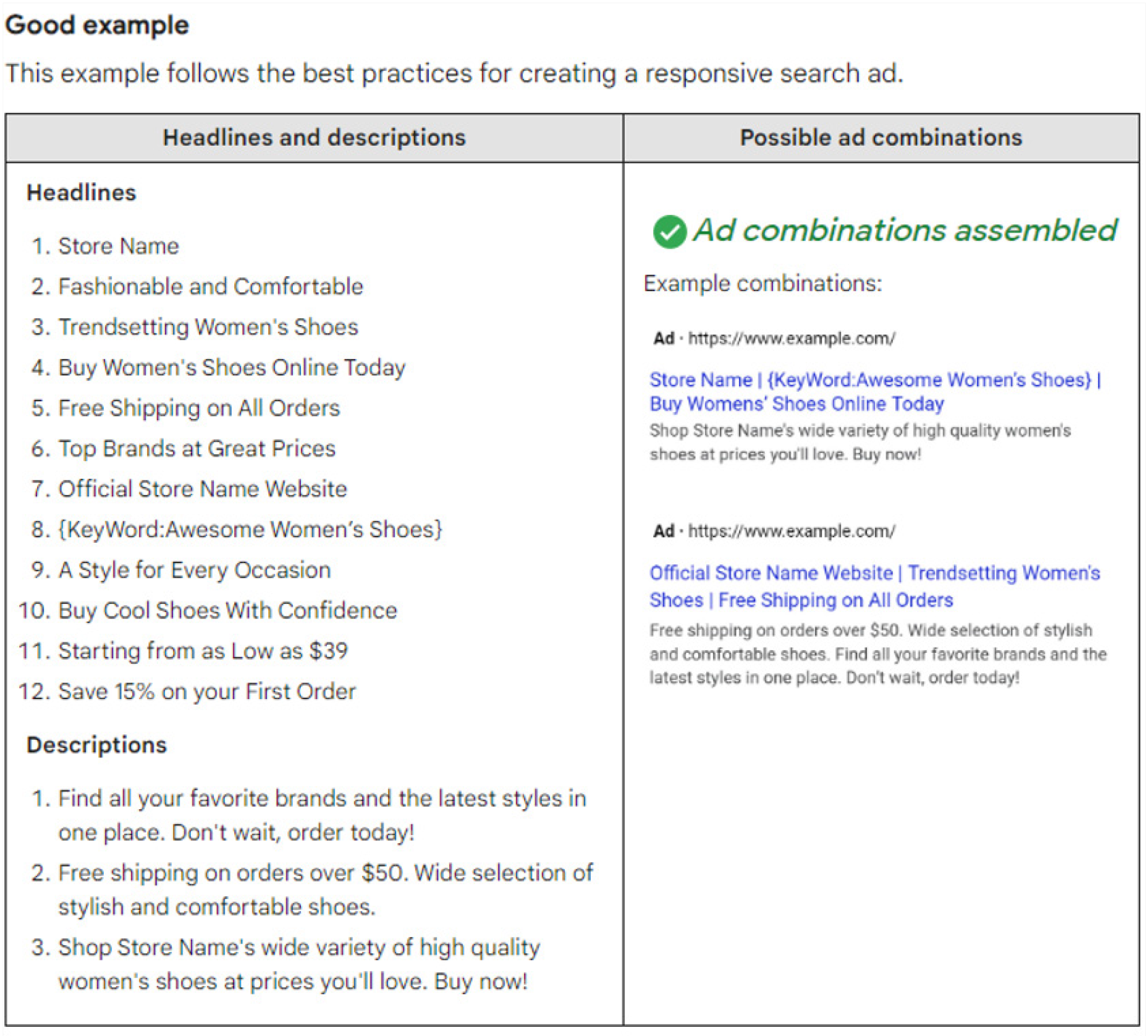
How To Write Successful
Responsive Search Ads
Responsive Search Ads
Online advertising plays a crucial role in attracting and engaging potential customers. According to Google, 15% of all daily searches contain new keywords that we haven’t seen before. This means that the job of matching an ad as closely as possible to users' search term is becoming increasingly difficult. What’s the solution?
In short, optimal use of Responsive Search Ads (RSAs).
RSAs adapt to and closely match what people are searching for at any time. They allow for dynamic ad variations and provide the flexibility needed to optimise campaign performance.
Here, we will explore the key elements and strategies to create successful Responsive Search Ads.
1. Harness The Power Of Ad Variations
When crafting your RSAs, it's essential to provide a variety of headlines and descriptions. Aim for 5–15 unique headlines and 2–4 distinct descriptions.
By offering a wide range of options, you enable the algorithm to test and optimise different combinations, ensuring your ads resonate with diverse audience segments.
Experiment with various calls-to-action, offers, branding and key benefits to determine what works best for your campaign.
It’s very important to incorporate at least 3 keywords from each ad group in your headlines and descriptions to achieve the highest possible relevance between users’ search terms and the ad.
2. Decide Whether To Pin Headlines And Descriptions
Pinning headlines or descriptions to specific positions in your RSAs can be a useful tactic for ensuring that certain important messages are always visible.
However, it's important to note that pinning may have implications for ad strength, visibility and performance. It is advisable not to overuse this feature to allow the machine learning algorithm to optimise the performance of the ads.
Nonetheless, pinning is beneficial when promoting limited-time offers, incorporating the brand name in the headline or for including regulatory copy that must be present in the ad. You can experiment with pinning different combinations to assess their performance and optimise your ads.
3. Continuous Monitoring And Optimisation
The success of your RSAs relies on continuous monitoring and optimisation.
Regularly review the performance metrics of your ads to identify areas of improvement. Pay close attention to click-through rates (CTRs), conversion rates and other key performance indicators.
Use this data to refine your headlines and descriptions, eliminate underperforming variations and introduce new ones. RSAs require ongoing optimisation to maximise their impact and achieve optimal campaign results.

Test, Test, Test
A crucial aspect of creating successful RSAs is to embrace a culture of testing.
Google's machine learning algorithm thrives on experimentation, and by continuously testing different headlines and descriptions, you can uncover insights that lead to higher click-through rates and conversions.
Test various value propositions, calls-to-action and messaging styles to determine which combinations resonate best with your target audience. A/B testing is an effective way to gauge the performance of different ad elements and refine your RSA strategy accordingly.
Final Thoughts
RSAs provide a dynamic and versatile tool to reach your target audience effectively. By understanding the fundamentals of RSAs and implementing best practices, you can create compelling ads that resonate with users' intent, increase click-through rates and drive conversions.
Remember to continuously test and optimise your ad variations while monitoring performance metrics to refine your RSA strategy further.
AS FEATURED ON
